 |
King of Chemicals Manufacturers |
Specifications, Properties, Uses, SDS of Colloidal Anhydrous Silica or Colloidal Silicon Dioxide and Fumed Silica or Precipitated Silica IP EP USP NF BP Ph Eur FCC Food Grade USP NF BP Ph Eur EP IP JP Analytical Reagent FCC Food Grade Manufacturer Supplier Exporter Wholesale & Small Packs, CAS Number 112945-52-5 or 7631-86-9 or 63231-67-4 and 112926-00-8. |
|
| King of Chemicals has several associated companies having accreditations like cGMP, GLP - FDA Approved Good Manufacturing Practice and Good Laboratory Practice of WHO standard, ISO-9001, ISO-14001, ISO/IEC 17025, ISO ISO-45000, HACCP, FSSC 220000, FSSAI, "REACH" Registered, Kosher & Halal Certified. e-CTD and DMF support can be made available if needed. We offer USP NF BP Ph Eur EP IP JP Analytical Reagent FCC Food Grade Chemicals & Nutraceuticals. | |
        |
|
Muby Chem Pvt. Ltd. is a several decades old group of companies, engaged in manufacturing, supplying, distributing, wholesale supplies of Colloidal Anhydrous Silica or Colloidal Silicon Dioxide and Fumed Silica EP USP NF BP Ph Eur FCC Food Grade for actual users, including retail or small pack supplies for research and development work.
We supply fine and speciality chemicals, pharmaceutical excipients, mineral fortifiers in chemically pure, analytical reagent grade, IP BP USP Ph Eur EP JP and other pharmaceutical grade monograph including FCC Food grade chemicals and Nutraceuticals at best prices. We and/or our associated units have all the facilities to supply as per cGMP standard observing good manufacturing practice and good laboratory practice. We can assure low microbial count and also offer a test certificate for the same. We maintain warehouses across USA, India, and UAE. Our group exports to USA, Canada, Mexico, Argentina, Brazil, Chile, Korea, Malaysia, Thailand, Indonesia, Europe, and several other parts of the world. We supply in wholesale container loads to small pack of few grams. Solid products may be specified for it size and shape as desired by the buyer.


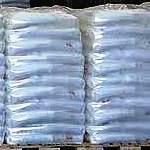
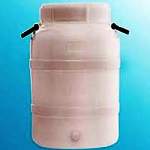
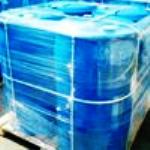
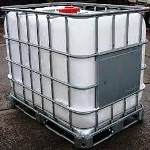
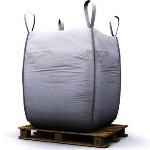
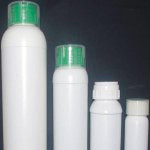
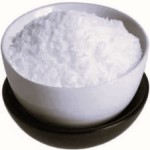
Colloidal Anhydrous Silica or Colloidal Silicon Dioxide and Fumed Silica or Precipitated Silica CAS Number 112945-52-5 or 7631-86-9 or 63231-67-4 and 112926-00-8
For Properties Specifications Uses of Colloidal Anhydrous Silica or Colloidal Silicon Dioxide and Fumed Silica Click Properties, Specifications, Uses, Price, Process of Colloidal Anhydrous Silica or Colloidal Silicon Dioxide and Fumed Silica Manufacturer.
For For SDS MSDS Sheet of Colloidal Anhydrous Silica or Colloidal Silicon Dioxide and Fumed Silica Click SDS Safety Data Sheet MSDS Sheet of Colloidal Anhydrous Silica or Colloidal Silicon Dioxide and Fumed Silica Manufacturer.
The Properties, Specifications, Monograph and Uses of Colloidal Anhydrous Silica or Colloidal Silicon Dioxide and Fumed Silica:
Colloidal Anhydrous Silica or Colloidal Silicon Dioxide is used in the pharmaceutical industry for tablet-making, including use as an anti-caking agent, adsorbent, disintegrant, or glidant to allow powder to flow freely when tablets are processed.
Specifications of Hydrophobic Colloidal Anhydrous Silica BP Ph Eur Grade:
DEFINITION
Colloidal silicon dioxide partly alkylated for hydrophobation.
Content: 99.0 per cent to 101.0 per cent SiO2 (ignited substance).
CHARACTERS
Appearance: White or almost white, light, fine, amorphous powder, not wet-able by water.
Solubility: Practically insoluble in water and mineral acids except hydrofluoric acid. It dissolves slowly in hot solutions of alkali hydroxides.
IDENTIFICATION
A. About 25 mg ignited in a platinum crucible at 900 ± 50C for h gives the reaction of silicates.
B. Water-dispersible fraction (see Tests).
TESTS
Chlorides: Maximum 250 ppm.
To 1.0 g add 30 mL of methanol and 20 mL of dilute nitric acid. Heat on a water bath for 15 min stirring frequently. Cool, dilute to 50 mL with water and filter. Dilute 10 mL of the filtrate to 15 mL with water.
Water-dispersible fraction: Maximum 3.0 per cent.
Place 0.400 g in a 500 mL separating funnel, add 100 mL of water and shake for 1 min. Allow to stand for 1 h. Allow 90 mL of the aqueous phase to run out dropwise without filtration into a suitable dish dried at 140C and cooled in a desiccator. Evaporate to dryness at 140C, starting at a low temperature to avoid splashing. Cool in a desiccator. The residue weighs a maximum of 12 mg.
Loss on ignition: Maximum 6.0 per cent, determined on 0.200 g by ignition in a platinum crucible at 900 ± 50C for 2 h. It is advisable to place the crucible in a cold oven and then to heat up the oven. Allow to cool in a desiccator before weighing.
Specifications of Colloidal Anhydrous Silica BP Ph Eur Grade:
SiO2 --- 60.1 --- CAS 7631-86-9
Action and use: Excipient.
DEFINITION
Content: 99.0 per cent to 100.5 per cent of SiO2 (ignited substance).
CHARACTERS
Appearance: White or almost white, light, fine, amorphous powder, with a particle size of about 15 nm.
Solubility: Practically insoluble in water and in mineral acids except hydrofluoric acid. It dissolves in hot solutions of alkali hydroxides.
IDENTIFICATION
About 20 mg gives the reaction of silicates.
TESTS
pH: 3.5 to 5.5.
Chlorides: Maximum 250 ppm.
To 1.0 g add a mixture of 20 mL of dilute nitric acid and 30 mL of water and heat on a water-bath for 15 min, shaking frequently. Dilute to 50 mL with water, if necessary, filter and cool. Dilute 10 mL of the filtrate to 15 mL with water.
Loss on ignition: Maximum 5.0 per cent, determined on 0.200 g by ignition in a platinum crucible at 900 ± 50C for 2 h. Allow to cool in a desiccator before weighing.
Fumed Silica, also known as pyrogenic silica is a very fine particulate or colloidal form of silicon dioxide. It is prepared by burning SiCl4 in an oxygen-rich hydrogen flame to produce a "smoke" of SiO2.
Specifications of Colloidal Silicon Dioxide USP NF Grade:
SiO2 --- 60.08
Fumed Silica.
Silica CAS 7631-86-9
Colloidal Silicon Dioxide is a submicroscopic fumed silica prepared by the vapor-phase hydrolysis of a silicon compound. When ignited at 1000 for 2 hours, it contains not less than 99.0 percent and not more than 100.5 percent of SiO2.
Identification:
A: Transfer about 5 mg to a platinum crucible and mix with about 200 mg of anhydrous potassium carbonate. Ignite at a red heat over a burner for about 10 minutes, and cool. Dissolve the melt in 2 mL of freshly distilled water, warming if necessary, and slowly add 2 mL of ammonium molybdate to the solution: a deep yellow color is produced.
B: [Caution: Avoid contact with o-tolidine when performing this test, and conduct the test in a wellventilated hood.] Place 1 drop of the yellow silicomolybdate solution obtained in Identification test A on a filter paper and evaporate the solvent. Add 1 drop of a saturated solution of o-tolidine in glacial acetic acid to reduce the silicomolybdate to molybdenum blue, and place the paper over ammonium hydroxide: a greenish blue spot is produced.
pH: between 3.5 and 5.5, in a 1 in 25 dispersion.
Loss on drying: Dry it in a tared platinum crucible at 105 for 2 hours: it loses not more than 2.5% of its weight. Retain the dried specimen, in the crucible, for the test for Loss on ignition.
Loss on ignition: Ignite the portion of Colloidal Silicon Dioxide, retained from the test for Loss on drying, at 1000C ± 25C to constant weight: the previously dried Colloidal Silicon Dioxide loses not more than 2.0% of its weight.
Arsenic: To pass the test. The limit is 8 microg per g.
Specifications of Silicon Dioxide USP NF Grade:
Precipitated Silica
SiO2xH2O
Anhydrous 60.08
Silicon Dioxide is obtained by insolubilizing the dissolved silica in sodium silicate solution. Where obtained by the addition of sodium silicate to a mineral acid, the product is termed silica gel; where obtained by the destabilization of a solution of sodium silicate in such manner as to yield very fine particles, the product is termed precipitated silica. After ignition at 1000C for not less than 1 hour, it contains not less than 99.0 percent of SiO2.
Packaging and storage: Preserve in tight containers, protected from moisture.
Labeling: Label it to state whether it is silica gel or precipitated silica.
Identification: Transfer about 5 mg to a platinum crucible, mix with about 200 mg of anhydrous potassium carbonate, ignite at a red heat over a burner for 10 minutes and cool. Dissolve the melt in 2 mL of recently distilled water, warming if necessary, and slowly add 2 mL of ammonium molybdate: a deep yellow color is produced.
pH: between 4 and 8, in a slurry (1 in 20).
Loss on drying: Dry it at 145 for 4 hours: it loses not more than 5.0% of its weight.
Loss on ignition: Ignite about 1 g of it, previously dried and accurately weighed, at 1000C for not less than 1 hour: it loses not more than 8.5% of its weight.
Chloride: Boil 5 g in 50 mL of water under a reflux condenser for 2 hours, cool, and filter. A 7-mL portion of the filtrate shows no more chloride than corresponds to 1.0 mL of 0.020 N hydrochloric acid (0.1%).
Sulfate: A 10-mL portion of the filtrate obtained in the test for Chloride shows no more sulfate than corresponds to 5.0 mL of 0.020 N sulfuric acid (0.5%).
Arsenic: To pass the test. --- The limit is 3 ppm.
Heavy metals: To pass the test. --- The limit is 0.003%.
Silica, Colloidal Anhydrous Silica is also available as per IP EP grade monograph.
The MSDS-SDS Hazard Statement of Colloidal Anhydrous Silica or Colloidal Silicon Dioxide and Fumed Silica:
Fumed Silica or Colloidal Silicon Dioxide SDS, Safety Data Sheet
MSDS Sheet, Material Safety Data Sheet 25-March-25
Section 1: Chemical Product and Company Identification
Product Name & Other Names: Fumed Silica or Colloidal Silicon Dioxide.
CAS Number: 112945-52-5 or 7631-86-9.
EINECS EC Code: 231-545-4
Relevant uses and uses advised against (if any): Industrial Manufacturing.
Section 2: Hazards Identification
GHS, Globally Harmonized System Classification in accordance with 29 CFR 1910
Classification according to Regulation (EC) No 1272/2008
Not a hazardous substance or mixture according to Regulation (EC) No. 1272/2008.
This substance is not classified as dangerous according to Directive 67/548/EEC.
Labeling according GHS & Regulation (EC) No 1272/2008
GHS Label Elements |
Signal Word: None
Precautionary statements:
P261: Avoid breathing dust/fume/gas/mist/vapors/spray.
P262: Do not get in eyes, on skin, or on clothing.
P281: Use personal protective equipment as required.
P302+P352: IF ON SKIN: Wash with plenty of soap and water.
P304+P340: IF INHALED: Remove victim to fresh air and keep at rest in a position comfortable for breathing.
P305+P351+P338: IF IN EYES: Rinse cautiously with water for several minutes. Remove contact lenses, if present and easy to do. Continue rinsing.
Section 3: Composition and Information on Ingredients
Product Name & Other Names: Fumed Silica or Colloidal Silicon Dioxide.
CAS Number: 112945-52-5 or 7631-86-9.
EINECS EC Code: 231-545-4
Section 4: First Aid Measures
Always seek medical advice after the first aid treatment.
Skin: Rinse with water. Soap may be used. Seek Medical Aid.
Eyes: Wash eyes with plenty of water for at least 15 minutes, lifting lids occasionally. Seek Medical Aid.
Inhalation: Remove to fresh air. If not breathing, give artificial respiration. If breathing is difficult, give oxygen.
Ingestion: If swallowed, induce vomiting immediately after giving two glasses of water. Never give anything by mouth to an unconscious person.
Section 5: Fire and Explosion Data
Flammability of the Product: Non-flammable.
Fire Fighting Media and Instructions: Use extinguishing measures that are appropriate to local circumstances and the surrounding environment.
Special Information: In the event of a fire, wear full protective clothing and NIOSH-approved self-contained breathing apparatus with full face piece operated in the pressure demand or other positive pressure mode. At high temperatures under fire conditions, it may produce toxic or irritating fumes.
Section 6: Accidental Release Measures
Personal precautions, protective equipment and emergency procedures: Avoid breathing dust/fumes/gas/mist/vapors/spray. Use individual protective equipment (waterproof boots, suitable protective clothing, safety glasses, etc.). Restrict unprotected personnel from the area.
Environmental precautions: Do not let the product enter drains, soil or water sources.
Methods and materials used for containment Cleanup procedures and Storage: Contain spilled material. Do not inhale vapors, dust, mist or gas. Avoid dust formation. Use a shovel to put the material into a convenient waste disposal container.
Section 7: Handling and Storage
Precautions for safe handling: Apply according to good manufacturing and industrial hygiene practices. Ensure proper ventilation. Wash thoroughly after handling. Do not drink, eat or smoke while handling. Avoid contact with skin, eyes and clothing. Minimize dust generation. Avoid breathing dust/fumes/gas/mist/vapors/spray. Keep container tightly closed. Avoid ingestion and inhalation. Use individual protective equipment (waterproof boots, suitable protective clothing, safety glasses, etc.).
Conditions for safe storage, including any incompatibilities: Store in cool, dry and ventilated area away from heat sources and protected from sunlight in tightly closed original container. Keep air contact to a minimum. Store protected from heat, sparks and ignition sources and incompatible materials. Avoid inhalation of dust/mist/vapor. Do not store with incompatible materials like chlorine trifluoride, hydrogen fluoride, oxygen difluoride etc.
Section 8: Exposure Controls/Personal Protection
Exposure Limits: US OSHA PEL: 6 mg/m3
Engineering Controls: Use process enclosures, local exhaust ventilation, or other engineering controls to keep airborne levels below recommended exposure limits. If user operations generate dust, fume or mist, use ventilation to keep exposure to airborne contaminants low.
Ventilation System: A system of local and/or general exhaust is recommended to keep employee exposures as low as possible.
Personal Respirators (NIOSH Approved): For conditions of use where exposure to dust or mist is apparent and engineering controls are not feasible, a particulate respirator may be worn.
Skin Protection: Wear protective gloves and clean body-covering clothing.
Eye Protection: Use chemical safety goggles and/or full face shield where dusting or splashing of solutions is possible. Maintain eye wash fountain and quick-drench facilities in work area.
Other Control Measures: Maintain good housekeeping in work area. Handle in accordance with good industrial hygiene and safety practice.
Section 9: Physical and Chemical Properties
Physical state and appearance: White powder.
Odor: Odorless.
Odor threshold: Not applicable.
pH: No data found.
Specific Gravity: No information found.
Melting point/freezing point: No information found.
Initial boiling point and boiling range: No information found.
Flash point: No information found.
Auto-ignition temperature: No information found.
Decomposition temperature: No information found.
Upper/lower flammability or explosive limits: No information found.
Vapor pressure: No information found.
Vapor density: No information found.
Evaporation rate: No information found.
Flammability (solid, gas): No information found.
Partition coefficient: n-octanol/water: No information found.
Solubility: No information found.
Viscosity: No information found.
Section 10: Stability and Reactivity Data
Stability: It is stable in room temperature in closed containers under normal storage & handling.
Conditions to avoid: Incompatible materials, strong oxidizing agents, strong acids, strong bases.
Incompatibility with various substances: Chlorine trifluoride, hydrogen fluoride, oxygen difluoride.
Polymerization: Will not occur.
Section 11: Toxicological Information
Toxicity to Animals: Oral LD50: LD50/oral/rat = > 5000 mg/kg. LD50/dermal/rabbit = > 2000 mg/kg.
Carcinogenic Effects: Not a reported carcinogen by IARC, NTP, ACGIH, OSHA.
Reproductive Effects: No data found.
Developmental Effects: No data found.
Section 12: Ecological Information
Toxicity to fish: Fish (Brachydanio rerio) ECO (96 hours): > 10,000 mg/l.
Ecotoxicity: Not expected to be dangerous to aquatic organisms.
Persistence and Degradability: No information found.
Mobility: No information found.
Bioaccumulation/ Accumulation: No information found.
Results of PBT and vPvB assessment: No information found.
Section 13: Disposal Considerations
Waste Disposal: Waste must be disposed of in accordance with federal, state and local environmental control regulations.
Section 14: Transport Information
Land Transport DOT USA, TDG Canada & ADR/RID Europe: Not regulated.
Sea Transport IMO/IMDG: Not regulated.
Air Transport IATA/ICAO: Not regulated.
Section 15: Other Regulatory Information
USA Federal and State Regulations:
SARA Section 311/312: No SARA hazards.
California Prop. 65 Components: Not listed to cause cancer, birth defects, or any other reproductive harm.
Disclaimer:
**************************
Our company provides this MSDS sheet in good faith but makes no representation as to its comprehensiveness or accuracy. This SDS sheet is intended only as a guide to the appropriate precautionary handling of the material by a properly trained person using this product. The above information has been compiled from various sources and has the possibility of discrepancy and being out-dated information. Individuals receiving the information must exercise their independent judgment and do further search in determining its appropriateness for a particular purpose. In no case shall our company be liable to loss or damages by the product user.
**************************
Precipitated Silica SDS, Safety Data Sheet
MSDS Sheet, Material Safety Data Sheet 25-March-2025
Section 1: Chemical Product and Company Identification
Product Name & Other Names: Precipitated Silica.
CAS Number: 112926-00-8.
EINECS EC Code: 601-214-2
Relevant uses and uses advised against (if any): Industrial Manufacturing.
Section 2: Hazards Identification
GHS, Globally Harmonized System Classification in accordance with 29 CFR 1910
Classification according to Regulation (EC) No 1272/2008
Not a hazardous substance or mixture according to Regulation (EC) No. 1272/2008.
This substance is not classified as dangerous according to Directive 67/548/EEC.
Labeling according GHS & Regulation (EC) No 1272/2008
GHS Label Elements NONE |
Signal Word: None
Precautionary statements:
P261: Avoid breathing dust/fume/gas/mist/vapors/spray.
P262: Do not get in eyes, on skin, or on clothing.
P281: Use personal protective equipment as required.
P302+P352: IF ON SKIN: Wash with plenty of soap and water.
P304+P340: IF INHALED: Remove victim to fresh air and keep at rest in a position comfortable for breathing.
P305+P351+P338: IF IN EYES: Rinse cautiously with water for several minutes. Remove contact lenses, if present and easy to do. Continue rinsing.
Section 3: Composition and Information on Ingredients
Product Name & Other Names: Precipitated Silica.
CAS Number: 112926-00-8.
EINECS EC Code: 601-214-2
Section 4: First Aid Measures
Always seek medical advice after the first aid treatment.
Skin: Rinse with water. Soap may be used. Seek Medical Aid.
Eyes: Wash eyes with plenty of water for at least 15 minutes, lifting lids occasionally. Seek Medical Aid.
Inhalation: Remove to fresh air. If not breathing, give artificial respiration. If breathing is difficult, give oxygen.
Ingestion: If swallowed, induce vomiting immediately after giving two glasses of water. Never give anything by mouth to an unconscious person.
Notes to Physician: Treat symptomatically.
Section 5: Fire and Explosion Data
Flammability of the Product: Non-flammable.
Products of Combustion: No information found.
Fire Fighting Media and Instructions: Use extinguishing measures that are appropriate to local circumstances and the surrounding environment.
Section 6: Accidental Release Measures
Personal precautions, protective equipment and emergency procedures: Avoid breathing dust/fumes/gas/mist/vapors/spray. Use individual protective equipment (waterproof boots, suitable protective clothing, safety glasses, etc.). Restrict unprotected personnel from the area. Prevent any contact with hot surfaces. Do not approach facing the wind.
Environmental precautions: Do not let the product enter drains, soil or water sources.
Methods and materials used for containment Cleanup procedures and Storage: Contain spilled material. Do not inhale vapors, dust, mist or gas. Avoid dust formation. Use a shovel to put the material into a convenient waste disposal container.
Section 7: Handling and Storage
Precautions for safe handling: Apply according to good manufacturing and industrial hygiene practices. Ensure proper ventilation. Wash thoroughly after handling. Do not drink, eat or smoke while handling. Avoid contact with skin, eyes and clothing. Minimize dust generation. Avoid breathing dust/fumes/gas/mist/vapors/spray. Keep container tightly closed. Avoid ingestion and inhalation. Use individual protective equipment (waterproof boots, suitable protective clothing, safety glasses, etc.).
Conditions for safe storage, including any incompatibilities: Store in cool, dry and ventilated area away from heat sources and protected from sunlight in tightly closed original container. Keep air contact to a minimum. Store protected from heat, sparks and ignition sources and incompatible materials. Avoid inhalation of dust/mist/vapor. Do not store with incompatible materials like chlorine trifluoride, hydrogen fluoride, oxygen difluoride etc.
Section 8: Exposure Controls/Personal Protection
Exposure Limits: US OSHA PEL: 6 mg/m3
Engineering Controls: Use process enclosures, local exhaust ventilation, or other engineering controls to keep airborne levels below recommended exposure limits. If user operations generate dust, fume or mist, use ventilation to keep exposure to airborne contaminants low.
Personal Protection: Safety glasses. Lab coat. Dust respirator. Be sure to use an approved/certified respirator or equivalent Gloves.
Personal Protection in Case of a Large Spill: Splash goggles. Full suit. Dust respirator. Boots. Gloves. A self-contained breathing apparatus should be used to avoid inhalation of the product.
Section 9: Physical and Chemical Properties
Physical state and appearance: White powder.
Odor: Odorless.
Odor threshold: Not applicable.
pH: No information found.
Specific Gravity: No information found.
Melting point/freezing point: No information found.
Initial boiling point and boiling range: No information found.
Flash point: No information found.
Auto-ignition temperature: No information found.
Decomposition temperature: No information found.
Upper/lower flammability or explosive limits: No information found.
Vapor pressure: No information found.
Vapor density: No information found.
Evaporation rate: No information found.
Flammability (solid, gas): No information found.
Partition coefficient: n-octanol/water: No information found.
Solubility: No information found.
Viscosity: No information found.
Section 10: Stability and Reactivity Data
Stability: ;It is stable in room temperature in closed containers under normal storage & handling.
Conditions to avoid: ;Incompatible materials, strong oxidizing agents, strong acids, strong bases.
Incompatibility with various substances: Chlorine trifluoride, hydrogen fluoride, oxygen difluoride.
Polymerization: Will not occur.
Section 11: Toxicological Information
The lethal dose for humans for synthetic amorphous silica is estimated at over 15000 mg/kg bw. Synthetic amorphous silica is a permitted food additive in the UK, US and many other countries. Synthetic amorphous silica has little adverse effect on lungs and does not produce significant disease or toxic effect when exposure is kept below the permitted limits.
Toxicity to Animals: Oral LD50: LD50/oral/rat = > 5000 mg/kg. LD50/dermal/rabbit = > 2000 mg/kg.
Carcinogenic Effects: Not a reported carcinogen by IARC, NTP, ACGIH, OSHA.
Reproductive Effects: No information found.
Developmental Effects: No information found.
Section 12: Ecological Information
Toxicity to fish: Fish (Brachydanio rerio) ECO (96 hours): > 10,000 mg/l.
Ecotoxicity: Not expected to be dangerous to aquatic organisms.
Persistence and Degradability: No information found.
Mobility: No information found.
Bioaccumulation/ Accumulation: No information found.
Results of PBT and vPvB assessment: No information found.
Section 13: Disposal Considerations
Waste Disposal: Waste must be disposed of in accordance with federal, state and local environmental control regulations.
Section 14: Transport Information
Land Transport DOT USA, TDG Canada & ADR/RID Europe: Not regulated.
Sea Transport IMO/IMDG: Not regulated.
Air Transport IATA/ICAO: Not regulated.
Section 15: Other Regulatory Information
USA Federal and State Regulations:
SARA Section 311/312: No SARA hazards.
California Prop. 65 Components: Not listed to cause cancer, birth defects, or any other reproductive harm.
Section 16 - Additional Information
Disclaimer:
**************************
Our company provides this MSDS sheet in good faith but makes no representation as to its comprehensiveness or accuracy. This SDS sheet is intended only as a guide to the appropriate precautionary handling of the material by a properly trained person using this product. The above information has been compiled from various sources and has the possibility of discrepancy and being out-dated information. Individuals receiving the information must exercise their independent judgment and do further search in determining its appropriateness for a particular purpose. In no case shall our company be liable to loss or damages by the product user.
**************************

Colloidal Anhydrous Silica or Colloidal Silicon Dioxide and Fumed Silica Manufacturers, Suppliers, Exporters, Wholesalers:
King of Chemicals manufacturers

Plot No. 2900/46&47 + 2900/163to167, GIDC, Ankleshwar, Dist. Bharuch, India
India, USA, UAE
TEL: (Office) 91-22-23774610, 91-22-23723564
e-mail: info@kingofchemicals.com
Copyright and Usual Disclaimer is Applicable --- August 19, 2025
If I give you “My Word” Nobody can undo it.
If I sign an “Agreement” my Lawyer will undo it
Our products are for industrial and laboratory use only. The user must test the material before use. We are not dispensing chemists or druggist and do not offer over the counter type (OTC) products for medical use by individuals.
We and our associates manufacture pure chemicals surpassing Monograph Specifications of Analytical Reagent Standards, British & European Pharmacopoeia BP Ph Eur EP Standard, US Pharmacopoeia USP NF Standard, Indian Pharmacopoeia IP Standard, Japan Pharmacopoeia JP Standard, FCC Food Grade Standard. |
|